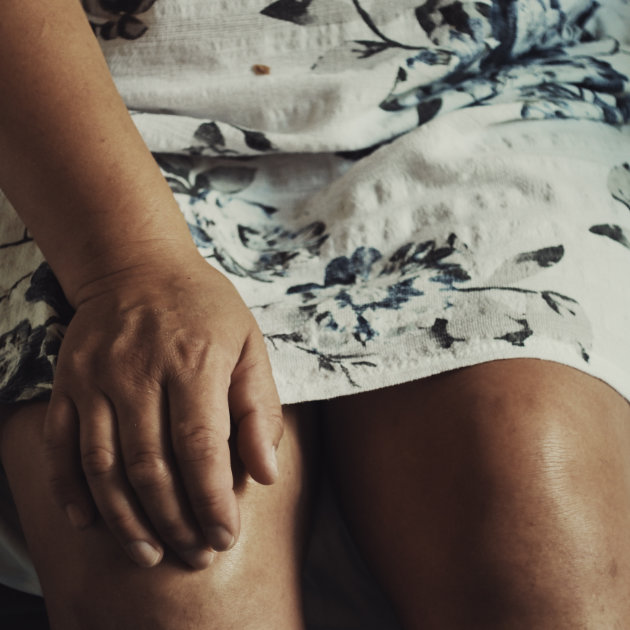Is it harmful to exercise with Knee Osteoarthritis?

Osteoarthritis is the most common form of arthritis, involving inflammation and major structural changes of the joint, causing pain and functional disability (1). Pain and stiffness are the most common symptoms, which are regularly attributed to the degree of degeneration on radiographic (x-ray) imaging (1). However, there is often a mismatch between symptoms and changes on imaging, with some showing moderate to severe degeneration on X-ray, but not feeling any symptoms of pain, or functional disability (1).
Osteoarthritis (OA) as a condition is shrouded in mass of clinical myths – many of which (like the one aforementioned) I’ll argue worsen outcomes and prevent optimal daily functioning for those with the condition. Phrases like ‘bone on bone’, and the many stories of friends and family with OA give the impression that loading degenerative joints is harmful, and unnecessarily painful. People with OA are rightly confused about the cause of their pain and bewildered by its variability and randomness (2). Without adequate information and advice from healthcare professionals, people do not know what they should and should not do, and, as a consequence, have avoided activity for fear of causing harm or further damage (2).
So, what should someone with Knee OA do?
And what is really going on inside a knee with OA?
Whilst the exact cause of knee OA remains unknown, many factors such as age, body mass index (BMI), knee injury, inflammation, sex and family history independently, and as a result of their interaction, contribute to its development and progression (3,4). In fact, every second major knee injury from sports results in OA 10–15 years later – see recent blog by Alec for more: The Link between Sporting Knee Injuries and Total Knee Replacements. (3).
Articular cartilage breakdown is the hallmark of OA, with aggrecan (a protein critical for cartilage structure and function) loss being an early sign of tissue degeneration (3). There is a common idea, one I’ve heard frequently growing up, that running, or squatting will eventually “wear down the knees”. Ask most people – there is an intuitive and common idea that the knee joints “wear out” from too much exercise.
This, however, is a myth.
We have no evidence to suggest a linear relationship between knee joint loading exercise through the lifespan and increased risk of knee OA. In fact, it’s quite the opposite. A recent review said knee joint loading exercise lead to increased cartilage volume and had a positive effect on cartilage defects (3). Moderate doses of physical activity could even slow down cartilage degeneration in middle-aged individuals at early OA stages (3). The review concluded by saying knee joint loading exercises seem not to harm articular cartilage in participants at increased risk of, or with, knee OA (3). Articular cartilage in the knee seems to follow a U-shaped curve in relation to level of activity/loading and risk of damage/degeneration. High impact activities like jumping and sports have been associated with cartilage deformation and increased risk of knee OA development. Whereas those with sedentary behaviours who do not load the knee joint much have also been shown to have detrimental effects on knee cartilage health. Thus, somewhere in the middle seems to be just right – but where is ‘the goldilocks zone’? and how much is too much?
The evidence to answer that question is scant but still there – particularly when it comes to running. We know from one 10-year cross-sectional study of almost 2700 people that self-selected runners showed no increased risk of symptomatic knee OA compared with nonrunners (5). Another study of 45 long distance runners from 1984 to 2002 showed that runners did not have more prevalent OA, nor more cases of severe OA than the control group who did not run (6). Even active marathon runners have shown no have no changed risk of developing or worsening knee OA, and even had a lower rate of arthritis than the general population in the United States.
From what we know so far – Exercise is a first line treatment of Osteoarthritis. Group exercise for OA has particularly been shown to be helpful, with improvements seen in patient’s pain, physical function, physical activity and quality of life and reduce the number of patients taking painkillers and being on sick leave (7). Every person is different and their symptoms/history unique – as such the exercise for someone with knee should be prescribed by a qualified Physiotherapist to suit their individual context and requirements.
For more information on individualised exercise prescription for knee osteoarthritis and Active Rehabilitation classes – contact us at POGO Physio for more details.

(APAM) POGO Physiotherapist
Book an appointment with Oliver here
Featured in the Top 50 Physical Therapy Blog
References:
- Cross, Marita, Emma Smith, Damian Hoy, Sandra Nolte, Ilana Ackerman, Marlene Fransen, Lisa Bridgett et al. “The global burden of hip and knee osteoarthritis: estimates from the global burden of disease 2010 study.” Annals of the rheumatic diseases73, no. 7 (2014): 1323-1330.
- Hurley, Michael, Kelly Dickson, Rachel Hallett, Robert Grant, Hanan Hauari, Nicola Walsh, Claire Stansfield, and Sandy Oliver. “Exercise interventions and patient beliefs for people with hip, knee or hip and knee osteoarthritis: a mixed methods review.” Cochrane database of systematic reviews4 (2018).
- Bricca, Alessio, Carsten B. Juhl, Martijn Steultjens, Wolfgang Wirth, and Ewa M. Roos. “Impact of exercise on articular cartilage in people at risk of, or with established, knee osteoarthritis: a systematic review of randomised controlled trials.” British journal of sports medicine53, no. 15 (2019): 940-947.
- Timmins, Kate A., Richard D. Leech, Mark E. Batt, and Kimberley L. Edwards. “Running and knee osteoarthritis: a systematic review and meta-analysis.” The American journal of sports medicine45, no. 6 (2017): 1447-1457.
- Lo, Grace H., Jeffrey B. Driban, Andrea M. Kriska, Timothy E. McAlindon, Richard B. Souza, Nancy J. Petersen, Kristi L. Storti et al. “Is There an Association Between a History of Running and Symptomatic Knee Osteoarthritis? A Cross‐Sectional Study From the Osteoarthritis Initiative.” Arthritis care & research69, no. 2 (2017): 183-191
- Chakravarty, Eliza F., Helen B. Hubert, Vijaya B. Lingala, Ernesto Zatarain, and James F. Fries. “Long distance running and knee osteoarthritis: a prospective study.” American journal of preventive medicine35, no. 2 (2008): 133-138
- Skou, Søren T., and Ewa M. Roos. “Good Life with osteoarthritis in Denmark (GLA:D™): evidence-based education and supervised neuromuscular exercise delivered by certified physiotherapists nationwide.” BMC musculoskeletal disorders18, no. 1 (2017): 72








